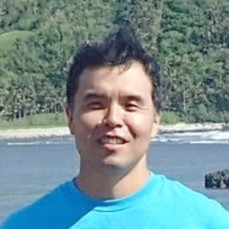Observation, Analysis, and Modeling of Nearshore Dynamics
A special issue of Journal of Marine Science and Engineering (ISSN 2077-1312). This special issue belongs to the section "Coastal Engineering".
Deadline for manuscript submissions: closed (15 October 2020) | Viewed by 46808
Special Issue Editors
Interests: nearshore hydrodynamics; sediment transport; numerical modeling; nearshore monitoring
Special Issues, Collections and Topics in MDPI journals
Interests: nearshore hydrodynamics; sediment transport; coastal morphology; mathematical modeling
Special Issues, Collections and Topics in MDPI journals
Grad. School of Eng., The University of Tokyo, Tokyo, Japan
Interests: coastal engineering; nearshore dynamics; coastal processes
Special Issues, Collections and Topics in MDPI journals
Interests: coastal hydrodynamics; coastal sediment transport; coastal disaster prevention
Special Issues, Collections and Topics in MDPI journals
Special Issue Information
Dear Colleagues,
Understanding the characteristics of nearshore dynamics and coastal processes is one of the essential tasks for sustainable coastal development, conservation, and protection. The coast exhibits varying dynamic characteristics over a broad range of spatial and temporal scales. Wind waves, for example, can determine instantaneous sediment transport and cause short-term cross-shore morphology change, while nearshore currents induced by waves and tides may determine long-term and large-scale morphology change, causing chronic coastal erosion. Such nearshore dynamics at different spatiotemporal scales typically interact with each other and are also affected by other factors such as human activities and climate change. Observation, analysis, and modeling of nearshore dynamics are, thus, inevitable not only for establishing the present conditions of the coast, but also for the evaluation and projection of the future evolution under the impact of a wide range of factors. This Special Issue, therefore, focuses on, but is not limited to the following:
- Observations, analysis, and modeling of nearshore hydrodynamics
- Observations, analysis, and modeling of nearshore sediment transport, including aeolian transport
- Observations, analysis, and modeling of long-term and/or short-term nearshore morphology change
- Development of monitoring techniques for nearshore dynamics at various spatiotemporal scales
We look forward to contributions of exciting new research in the form of research papers, reviews, and short communications to this Special Issue.
Prof. Yoshimitsu Tajima
Prof. Magnus Larson
Prof. Yoshiaki Kuriyama
Dr. Takenori Shimozono
Guest Editors
Manuscript Submission Information
Manuscripts should be submitted online at www.mdpi.com by registering and logging in to this website. Once you are registered, click here to go to the submission form. Manuscripts can be submitted until the deadline. All submissions that pass pre-check are peer-reviewed. Accepted papers will be published continuously in the journal (as soon as accepted) and will be listed together on the special issue website. Research articles, review articles as well as short communications are invited. For planned papers, a title and short abstract (about 100 words) can be sent to the Editorial Office for announcement on this website.
Submitted manuscripts should not have been published previously, nor be under consideration for publication elsewhere (except conference proceedings papers). All manuscripts are thoroughly refereed through a single-blind peer-review process. A guide for authors and other relevant information for submission of manuscripts is available on the Instructions for Authors page. Journal of Marine Science and Engineering is an international peer-reviewed open access monthly journal published by MDPI.
Please visit the Instructions for Authors page before submitting a manuscript. The Article Processing Charge (APC) for publication in this open access journal is 2600 CHF (Swiss Francs). Submitted papers should be well formatted and use good English. Authors may use MDPI's English editing service prior to publication or during author revisions.
Keywords
- Nearshore dynamics
- nearshore monitoring
- nearshore waves and currents
- sediment transport
- coastal processes
- mathematical and numerical modeling
Benefits of Publishing in a Special Issue
- Ease of navigation: Grouping papers by topic helps scholars navigate broad scope journals more efficiently.
- Greater discoverability: Special Issues support the reach and impact of scientific research. Articles in Special Issues are more discoverable and cited more frequently.
- Expansion of research network: Special Issues facilitate connections among authors, fostering scientific collaborations.
- External promotion: Articles in Special Issues are often promoted through the journal's social media, increasing their visibility.
- e-Book format: Special Issues with more than 10 articles can be published as dedicated e-books, ensuring wide and rapid dissemination.
Further information on MDPI's Special Issue polices can be found here.








